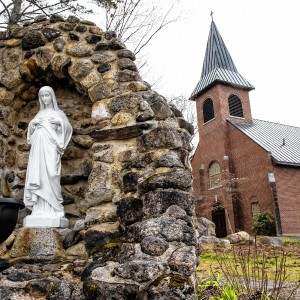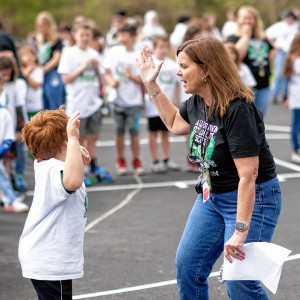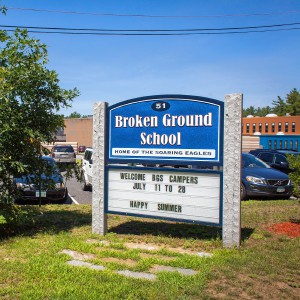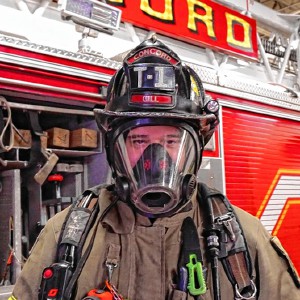The Cold Case Unit says it’s doing its best to crack cases; the families of people who have been murdered or disappeared aren’t so sure.
| Published: 08-07-2023 4:21 PM |
They go on the same date each year, strangers lighting candles and saying a silent prayer at 7:30 p.m.
They meet at the spot in Haverhill in northwestern New Hampshire near Interstate 91 where Maura Murray was last seen – on Feb. 9, 2004. The spot is near a sharp corner on a dark rural road, past a big weathered barn. The tree that in years past was used to hang blue ribbons is gone.
Different groups of friends and family have been coming here annually to pay tribute to the woman who went missing when she was 21. This year’s tribute, though, was different.
This time, about six months ago, with snow and rain expected on the night of the event, some in the group, estimated to be about 25 to 30 people, rented a lodge, a place to stay dry, to blend those gathering in Maura’s name with family members of victims of other heinous crimes.
In a safe and comfortable environment, they could relate to one another, speak the same language, explain their grief to someone who would understand.
That was the start of what is called the New Hampshire Coalition of Families of the Missing and Murdered, a team of six women – and growing – who joined hands and created lifelong bonds in a grass roots manner, fueled by the awful common denominator that emerged in the lodge that night.
They’ll gather at the State House on Aug. 15 for their first official rally and plan to fire away at the state’s Attorney General’s Office for not bringing enough of these killers to justice. In the past, voices have risen, but never in the organized manner that this one features. They’re hoping to attract 100 supporters, maybe more.
They question the compassion of the state’s top prosecutors, their desire to follow leads and interview potential witnesses. They want transparency and communication, at the very least. Answer the phone. Return their calls.
Article continues after...
Yesterday's Most Read Articles
 Steeplegate project to reopen to public comment as developer seeks to reduce required parking
Steeplegate project to reopen to public comment as developer seeks to reduce required parking
 A turbulent 50-year history: Inside the rise and fall of a tiny Catholic college in Warner
A turbulent 50-year history: Inside the rise and fall of a tiny Catholic college in Warner
 Students and staff welcome the opening of new Allenstown K-8 school
Students and staff welcome the opening of new Allenstown K-8 school
 UNH faculty and students call on university police chief to resign following his alleged assault on a student
UNH faculty and students call on university police chief to resign following his alleged assault on a student
 High schools: Friday and Saturday results
High schools: Friday and Saturday results
 School Board to vote on new Broken Ground principal nominee
School Board to vote on new Broken Ground principal nominee
What’s worse, family victims worry that no news means that their case has been abandoned, and they’re not mincing words. Jane Boroski of Hinsdale is one of the individuals leading this charge. She’s the sole survivor of a serial killer who murdered seven women along the border with Vermont in 1988. The killer was never caught.
Boroski counted 27 stab wounds. Now, she’s ready to roll.
“We’ll march to the Capitol,” said Boroski, 57. “We will have a podium with a sound system. We’ll talk about why we’re there. We’re not getting anywhere and we’re not able to speak with (Attorney General John) Formella. We’re hoping to have a one-on-one meeting with him so we can share our concerns.”
Julie Murray, Maura’s sister, and another family member of a victim – whose great niece’s remains were found five years ago – believe they know who’s responsible for the crimes against their loved ones, or at least they think they know.
They have not been shy to share their opinions, and name names, but no one has yet been charged in either instance.
The 20th anniversary of Maura Murray’s disappearance is in seven months. Many of the same people who have gone in years past will attend, remembering Maura and the other 141 cases in the Granite State that remain cold.
“My family has encountered roadblock after roadblock in dealings with public officials,” Julie, who lives in Virginia, said by phone. “The lack of transparency and communication from the state makes the ambiguity of the tragic situation all the more unbearable. We are frustrated, and we demand action.”
In response to criticism that law enforcement needs to be more aggressive and open-minded in these cold cases, Attorney General Formella said information is sometimes withheld so as not to compromise an ongoing investigation.
“You will have cases where you think you know what happened,” Formella said in a conference room at the N.H. Department of Justice. “You might think you know who is responsible, but you don’t have proof beyond a reasonable doubt.”
Formella acknowledged that anger and frustration are natural byproducts of these circumstances.
“Those decades, when there’s a lack of a resolution and lack of information, can create tension,” he said. “It can create an adversarial feeling and we don’t ever want that. To us, we are in this together.”
It’s a line that causes Julie Murray and others, each devastated by loss, to roll their eyes.
“I think there is a possibility that they may find something,” said Valorie Haynes-Alvarez, whose great niece’s remains were found in 2018. “For me, I would love to see justice. It would be nice to have some kind of assurance that they are doing their best with following up tips, and I don’t believe that.”
Members of the Department of Justice are sensitive to the concerns and discussed their efforts to solve the state’s cold cases. They keep a list of every unsolved case on their website.
The Attorney General was joined at a long mahogany table by Scott Chase, chief of the cold case unit, and Ben Agati, head of the homicide unit.
As for details on the status of cases, there was only so much they could say, they insisted. They continue to try to solve these cases, no matter how cold they get, they said. They have a dedicated Office of Victim/Witness Assistance to communicate with families.
“We have regular communication with all of our victims and family members in any case we have,” Formella said. “That includes cold cases. One thing that happens is there are times when we can't provide information.”
Michael Garrity, the director of communications, documented cases that could be discussed. The ones with successful results.
Earlier this year, the Cold Case Unit identified a murder victim from 1971 as Katherine Ann Alston, 26 of Boston. Last year, a murder case from 1972 was closed.
And just last month, a press conference was held to announce that the murder of Laura Kempton more than 40 years ago in Portsmouth had been solved.
Forensic technology continues to aid law enforcement in its pursuit of justice. That happened last month in the Portsmouth mystery.
“Modern investigative techniques with advancements in science,” said Chase, explaining how the Portsmouth case was cracked. “(Advancements in) DNA are huge and will be huge.”
That gives everyone involved here hope that these crimes can be solved. The Attorney General’s Office is excited over the recent news that the State Police received a grant of $1.5 million, earmarked for advancements in DNA testing.
“We’re working on this new protocol we’re instituting,” Chase said. “Hopefully, it will be a more structured and methodical approach to do all of this.”
Solving the Portsmouth mystery did little to buoy the spirits of coalition members. Asked for her reaction to that case, Boroski scoffed.
“I felt that big announcement was just to try to glorify themselves,” she said. “To make people think that they are working on cold cases, give people the impression, ‘We’re doing our jobs.’ Well, there are a whole lot more unsolved cases in New Hampshire.”
Boroski is part of the core foundation of coalition members who met at the lodge last winter. She’s connected with the other five members via Zoom, meeting once per month since April.
Her story is unique. Boroski isn’t actually on the state’s cold case list, because she’s not dead and she’s not missing.
Somehow, while seven months pregnant, she survived a knife attack by a man known as the Connecticut River Valley Killer, who had already killed seven women between 1978 and ‘87, putting those victims on the cold case list. He stabbed each one to death.
Then, on Aug. 6, 1988, Boroski ate ice cream and fried dough with friends at the Cheshire County Fair in Swanzey. She stopped at an isolated vending machine for a soda on her way home when a dark figure pulled into the parking lot, walked to her driver’s side door and opened it.
He tried to pull her out of the car, but Soboski defended herself and her baby with fire, kicking so hard that she smashed her windshield.
She ran but was tackled “like a football player.” He pinned her on her back and began stabbing her.
“I did not see it coming,” Boroski said.
She was stabbed 27 times. She spent three weeks in the hospital. She suffered a severed jugular and two collapsed lungs. Her kidney was lacerated and a tendon in her knee had also been cut.
The baby survived as well. Her name is Jessica, she’s 34, and she’s since given her mom a granddaughter.
Boroski described the killer’s vehicle as a Jeep Wagoneer, and her information allowed police to draw a composite sketch. About 5-foot-7, high forehead, hair combed back, thin face, clean shaven, no glasses.
“I felt confident because these two detectives came to my room almost every day,” Boroski said. “And in my mind, I am thinking that with the car description, they’re going to find him. Every day, I was like, ‘Did you find him?’ No, each day.”
It took 20 years for her nightmares – being chased, reliving the attack, seeing the seven women who were killed – to subside, and her PTSD is under control. She co-hosts a podcast from her studio in Keene and will answer any question a caller may have.
And that includes slamming the AG’s Office and law enforcement in general. She said she got the runaround by phone once while trying to determine who was in charge of her case. She went to the Attorney General’s Office, local police, State Police, and back to the AG. Her head was spinning.
Officially, the State Police Troop C, is overseeing Boroski’s case, but she said the process to find information took far longer than it should have.
“I did a complete circle,” Boroski said. “I submitted the paperwork to get my case file and that was denied because it’s an active investigation. Well, if it’s still active, who the hell is the lead?”
Trish Haynes was reported missing in July of 2018. Her remains were discovered two months later in grant’s pond in Grafton County.
Like Boroski, she’s not on the Granite State Cold Case list, even though her remains were discovered five years ago. The reasoning was odd, considering she was killed six years ago.
“Trish Haynes is still in its initial period of investigation and is not a cold case,” Garrity said in an email. “Therefore, it is supervised and investigated by the Homicide Unit, not the Cold Case Unit.”
Try telling that to her great aunt, Valorie Haynes-Alvarez of Franklin. She and Boroski have lumped their cases in with the 140 or so Cold Case mysteries. That’s where the publicity lies, needed, perhaps, to loosen up those with information and encourage them to come forward.
For her part, Haynes-Alvarez tried to do it by the book, calling and then stopping by State Police Troop C to get answers.
“I asked what was up and this one big officer took all my notes,” Haynes-Alvarez said. “Then I get a call from my advocate the next day. She had been told about my meeting. She told me, ‘You can’t do that; you have to go through me.’ But all she’d say is there’s nothing new to report.”
Another time, Haynes-Alvarez said, she was told by police that her great niece had been murdered, but was told to say nothing, even to family members.
Frustrated and growing impatient, Haynes-Alvared tipped off WMUR, forcing the Attorney General’s Office to hold a press conference to get ahead of the story and confirm that the remains found indeed belonged to Haynes.
“They said not to divulge the fact that we know she’s dead; we don’t want to hinder the investigation,” Haynes-Alvarez said. “They lean on that, and half the time they are not doing anything, but they use it as a block to buy time.”
Haynes-Alvarez has long believed that a young couple who lived in Grafton most likely killed her great niece. She said she’s heard from witnesses who said the man and woman abused Haynes, who was staying at their home at the time of her disappearance.
She insinuated that they were responsible, and her beliefs have been published, including the couple’s names. They’re presently both in prison and have long rap sheets that include several felonies. Police investigated their home but found nothing.
Asked if the couple remained on law enforcement’s radar as suspects, Agati, head of Concord’s Homicide Unit, said, “We’ve heard of them.”
Haynes-Alvarez admires Julie Murray, saying she’s been tough while waiting and hoping that someone will come forward with information about Maura.
“Talk about a badass chick,” Haynes-Alvarez said. “That girl is the strongest, most amazing woman I have ever met. I adore her so much. She’s a warrior.”
Julie lives in Virginia. She’ll return to the Granite State for the Aug. 15 rally at the State House. She’ll draw attention to the missing and the murdered. She wants the folks at the Attorney General’s Office to know there’s an organization in the Granite State that wants answers.
“This is hard stuff, so many stay out of the public eye,” Julie said, “but with cases like mine, I have been in their faces for 19 years. I see a big pattern of a huge communication gap.”
Maura was 21 when she went missing. She was studying nursing at UMass Amherst. She was captain of her high school cross county team in Hanson, Mass., once finishing 33rd in national competition. “She rewrote our record books,” Julie said.
Maura left campus and drove north the day after a snowstorm. No one knew exactly where she was going or why. At the time, she was feeling stressed over personal problems.
What’s certain is she skidded off the road into trees and a snowbank on Route 112 in Haverhill. Her car was later found abandoned, doors locked, at the end of that hair-point turn.
There were witnesses living nearby, including a bus driver who drove past her car and asked if she needed help. All leads fizzled.
“We’re losing hope,” Julie said. “The hope now is to get a resolution. The only way to get action is to show frustration in public and demand accountability from officials. We are frustrated.”
The New Hampshire’s Unsolved Advocacy Coalition leaders pulled no punches. But they also tempered their words and tone, sometimes extending an olive branch to soften the blow in an attempt to create a more harmonious dialogue.
“We’re not trying to jeopardize the investigation,” Julie said. “We would just appreciate a little acknowledgment. We would like to ask if we could schedule an appointment. Can we get an update?”
Instead, they say they’re receiving a closed-door policy from the Attorney General’s Office. In fact, they wonder if law enforcement is paying any attention at all to their cases.
“I am absolutely open to sitting down with the folks who might be at the rally and having conversations with them,” Formella said. “We have to figure out how that goes. We would want to set it up so the conversations are productive. If a victim’s family member comes in and wants to speak with me or speak with us, we’re always happy to do that.
Added Chase, “We see what they’re doing as a positive. It is good for them to be using their voices and bringing awareness to these case. We’re all aligned wanting to get justice for these victims and family members and solve these cases.”
At the rally on Aug. 15, the coalition members want the public to hear their message, that the Attorney General’s Office needs to do more to solve these cases, provide updates and check in with them from time to time.
Mostly, though, they want to speak about the victims as people. They want to believe that the individuals searching for justice care about their cases, even the older ones from decades before.
Boroski is the lone victim who’s alive to tell her story. She spoke for the seven women who were not as fortunate as she was, stabbed to death by an unknown assailant 35 years ago.
“We were just living our lives when evil stepped in,” Boroski said. “I just don’t want them to be forgotten.”


 Granite Geek: Free government software for taxes – what could go wrong? (Not much, as it turns out)
Granite Geek: Free government software for taxes – what could go wrong? (Not much, as it turns out) To snuff out cancer, NH firefighters seek regular screenings
To snuff out cancer, NH firefighters seek regular screenings New Hampshire jury finds state liable for abuse at youth detention center and awards victim $38M
New Hampshire jury finds state liable for abuse at youth detention center and awards victim $38M Jurors hear closing arguments in landmark case alleging abuse at New Hampshire youth center
Jurors hear closing arguments in landmark case alleging abuse at New Hampshire youth center
